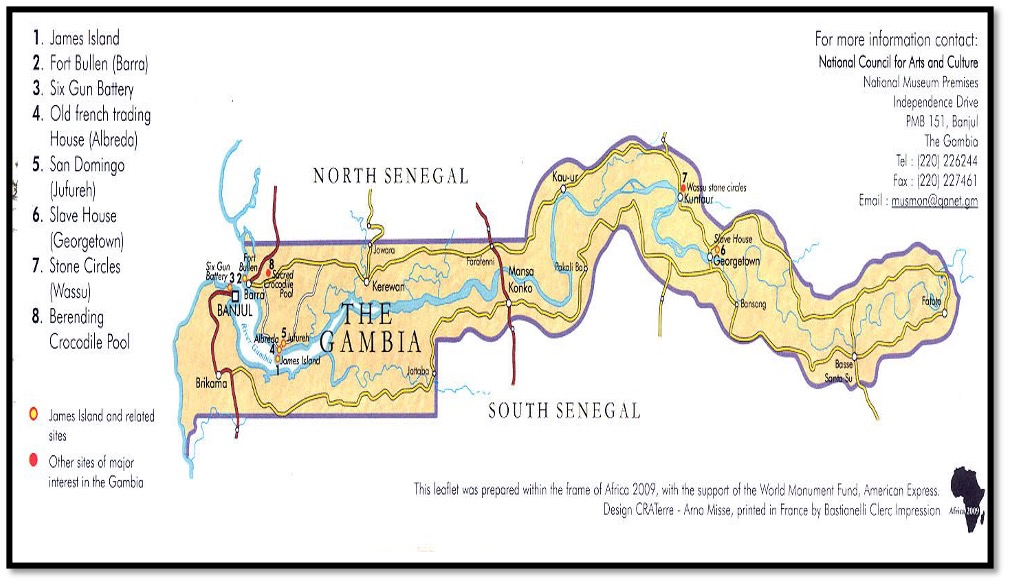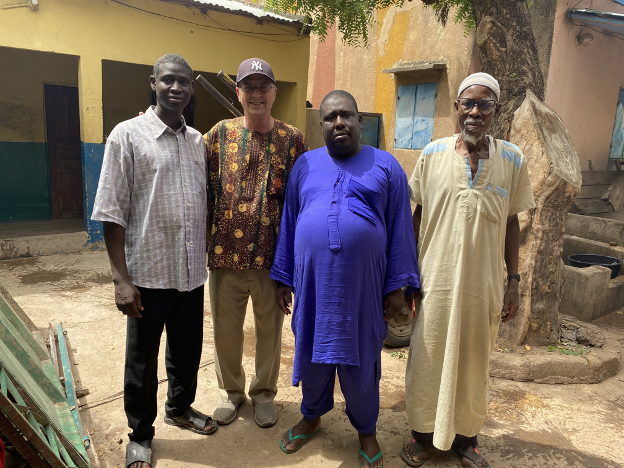An account is required to join the Society, renew annual memberships online, register for the Annual Meeting, and access the journals Practicing Anthropology and Human Organization
- Hello Guest!|Log In | Register
Back to Bajakunda
“Nna siloo mu kayiro leti”
Bill Roberts
St. Mary’s College of Maryland
Like many anthropologists of my generation, I was transformed by my stint as a Peace Corps volunteer. During my years as a volunteer I realized how useful my undergraduate anthropology degree was for adjusting to village life and working with African counterparts in maternal child health, rural water supply and sanitation in The Gambia and later Zaire. Because my undergraduate anthropology education was so useful to my volunteer life, I chose a graduate program that emphasized the application of anthropology in the field and even in some coursework. These experiences have shaped my career and my own approach to practice, which means practicing anthropology everywhere, with everybody, all the time.
Over the 32 years I’ve spent at St. Mary’s College of Maryland one of my main activities has been working with colleagues to grow opportunities for students to have meaningful international education experiences. The personal culmination of these efforts was the 20-year Promoting Educational And Cultural Exchange program in The Gambia, aka the PEACE program, Gambia. At one time, this program featured a semester-long exchange program with the University of The Gambia during the academic year and a biennial archaeology or ethnography summer field school. The program was unceremoniously closed in 2016 by my College’s administration, and for six years I did not return to Gambia.
Fortunately for me, during what was (unbeknownst to me) the final field school season in 2014, the PEACE program hosted a group of faculty and professional students from the University of Maryland Baltimore (UMDB). Even with the PEACE program’s closure in 2016, I continued to provide whatever support I could to subsequent biennial UMDB international programs to The Gambia led by colleagues at the medical school. As the University of Maryland Baltimore’s relationships have grown with The Gambia’s Ministry of Health and the University of The Gambia School for Medicine and Allied Health Sciences, my colleagues established a role for me in one of their projects that has given me new opportunities to work in Gambia.
Just this past June after concluding my work with the University of Maryland Baltimore mission, I stayed a few additional days to travel “upcountry” or, as a Mandinka speaker would say, into the bolongkono. This latter term literally means “into the (estuarine) tributary.” It’s an appropriate term given that Gambia is the smallest country in Africa that stretches eastward following the river by the same name for approximately 300 miles from its mouth on the West African Atlantic coast. It’s the longest navigable river south of the Saharan desert, and a site of intensive European/African interaction from the late 15th through the early 19th centuries. While the river is the country’s iconic geographic feature, it has also been one of the most prominent barriers for people wanting to travel from the north to the south bank of the country. No longer! There are now three “new” bridges in Gambia that traverse the river: the Trans-Gambia highway from Farafenni to Soma (connecting southern and northern Senegal), and the Basse and Fatoto bridges in the Upper River Region (see Figure 1 below).

Figure 1. Tourist sites in The Gambia, the National Centre (formerly Council) for Arts and Culture, Gambia.
So off we set from the Greater Banjul – Brikama population center on the southwestern bank of the country, along a nicely paved road heading east to Soma/Mansakonko where we headed across the new toll bridge to Farafenni on the north bank. It took less than 10 minutes to pay the toll and cross the river. My good friend and former Peace Corps counterpart, Gibril (the Gambian version of Gabriel), talked about the hours we’ve spent in the past, waiting to cross on the ferry. We headed east again along a nice paved road until Janjangbureh (Georgetown on the map in figure 1), and then continued east on the north bank on new roads neither of us had traveled through the districts of Sami, Sandu, and into Wuli district. Crossing a beautiful new bridge built by the People’s Republic of China (PRC) at Basse, where decades ago we had to use ferries took only a few minutes. The next day we traversed the same bridge and continued our journey east to Bajakunda village, a large Serahuli (aka Soninke in Senegal) “village” where I spent two years from 1979-81, with irregular return visits to the village over the next four decades.
When I was a volunteer all those years back, the Gambian government was considering closing the village primary school because of lack of enrollment. As we neared the village on a beautiful paved road, we passed a new senior secondary school and a new fire and rescue facility near the large health center. Bajakunda expatriates living in Angola, Gabon, Spain, and the United States had built the health center years ago, and I wondered whether they’d also furnished some of the funds for the new school and first responder center. There were power lines going from the road into the village, which has continued to grow and seems more like a small, densely inhabited bustling town than a sleepy West African village.
Two good friends that I’d known since my Peace Corps days had passed in the last year – so I wanted to make sure to visit their families, offer my condolences and appreciations for all that my late friends had meant to me, and then leave a small gift that could be used for the Eid al-Fitr (aka Tabaski) that was approaching. Altogether we stopped in three compounds, Sankareh kunda, Suso kunda, and Bajaha kunda, and I had a chance to go through greetings in both Mandinka and Serahuli, and reconnect with people after so many years.
We left the village and continued east until we reached Fatoto and another beautiful bridge built across the river by the PRC. We made it as far west as the Trans-Gambian highway, and after a night’s rest continued to the capital city area where I caught my flight until next year.
Now I’m back at the College and preparing for the upcoming academic year. I feel fortunate to still have a connection to people in Bajakunda and The Gambia, where I learned that anthropology is both fascinating and useful. I think it was Conrad Kottak who said something that goes like this. Anthropology is a discipline that has carefully documented human creativity and diversity for living a full and meaningful life. For those who study it, it offers alternatives, behavioral or ideological, that we can incorporate into our own ways of acting and being. I have learned much over the years from my Gambian colleagues and friends that has expanded and reinforced the importance I place on collaboration, community, family, gratitude, hard work, and hospitality. Next year, I plan to bring my family to Gambia – it will have been a decade since Debbie and Gabriel have been in Gambia, and two decades for Andrew.

Figure 2, Bill has the NY Yankees baseball cap on, his toma (namesake) is Mohammadou Yaya to his left, his older brother Seihna to his right, and my former co-worker Ali to the far right. June 18, 2023, photo by Gibril Sumbunu.

Cart
Search